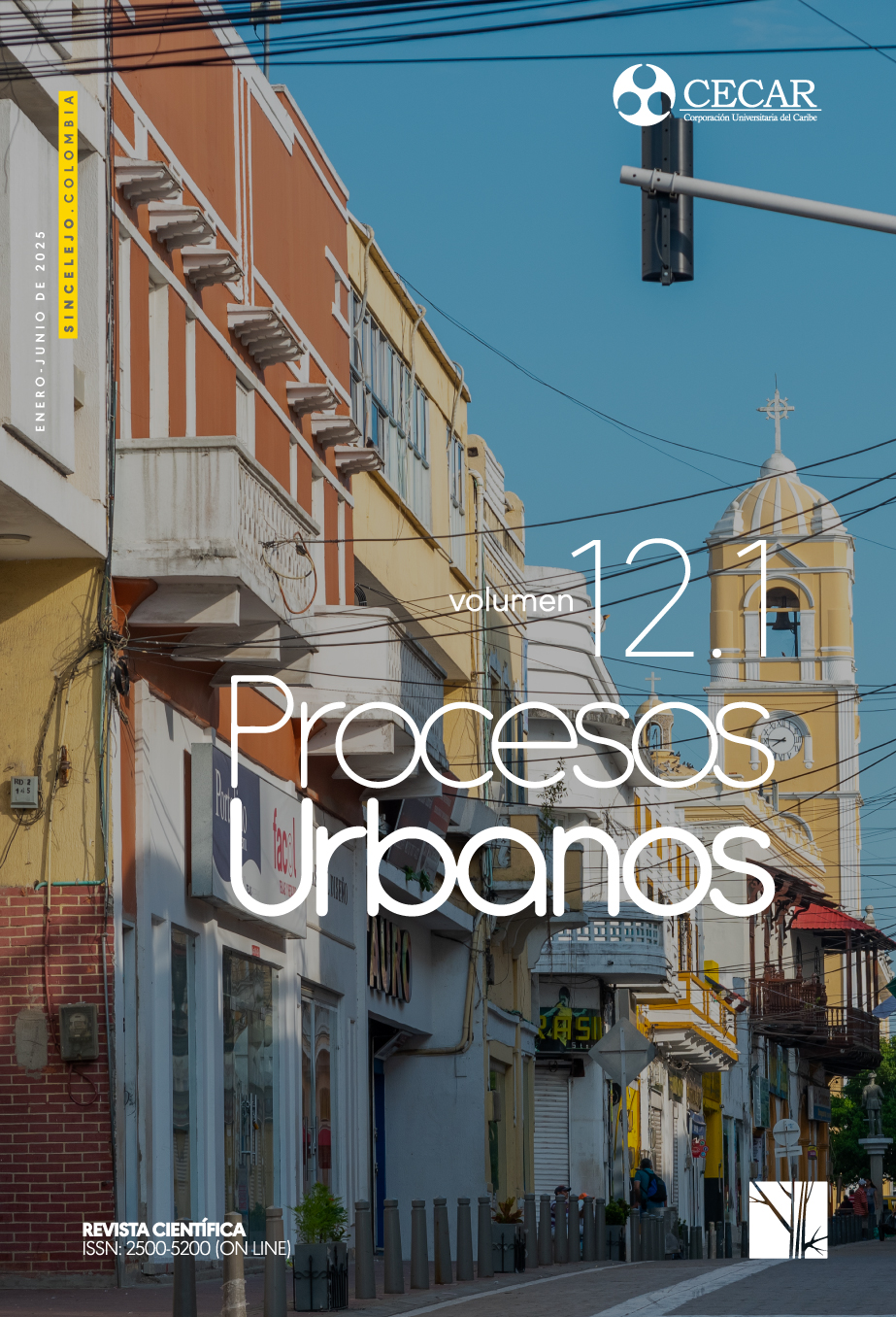Abstract
The general objective of the research was to measure the degree of urban resilience based on five indicators: diversity, connectivity, redundancy, modularity, and efficiency of the blocks located within Unidad Vecinal 321 in the city of Santa Cruz de la Sierra. The results provided valuable information to generate knowledge that can positively influence the increase of resilience in this peri-urban area sustainably. The conclusions indicate that the city possesses a series of qualities in its urban form, which are systematically omitted during its planning, development, and management.
Licence
Copyright (c) 2025 Revista Procesos Urbanos está distribuido bajo la Licencia:

This work is licensed under a Creative Commons Attribution-ShareAlike 4.0 International License.
References
Feliciotti, A. (2018). Resilience and urban design: a systems approach to the study of resilience in urban form. Learning from the case of Gorbals. [Tesis Doctoral]. Universidad de Strathclyde.
Feliciotti, A., Romice, O. y Porta, S. (2016). Design for change: five proxies for resilience in the urban form, Open House International, 41 (4), 23-30. DOI: https://doi.org/10.1108/ohi-04-2016-b0004
Feliciotti, A, Romice, O, y Porta, S. (2018). From system ecology to urban morphology: towards a theory of urban form resilience. Recuperado de https://pure.strath.ac.uk/ws/portalfiles/portal/85290786/Feliciotti_etal_RURI_2018_From_system_ecology_to_urban_morphology.pdf
García Martin, F, M. (2017) La forma urbana. Un estudio de las periferias de las ciudades intermedias españolas a lo largo del siglo XX. [Tesis Doctoral]. Escuela Técnica Superior de Arquitectura de Madrid.
Gehl, J. (2010). Cities for people. Washington: Island Press. ISBN: 9781597265737.
Inzulza Contardo, J., Gatica Araya, P., Easton Vargas, G., y Pérez Tello, S. (2021). ¿Diseño urbano resiliente en el Piedemonte de Santiago? Contraste de escenarios comunales con riesgo sísmico frente a la falla San Ramón. Revista Urbano, 24(43), 96-107. DOI: https://doi.org/10.22320/07183607.2021.24.43.09
Kropf, K. (2006) Crisis in the typological process and the language of innovation and tradition. Urban Morphology 10(1) 70-74. Recuperado de http://www.urbanform.org/online_unlimited/pdf2006/2006101_70-77.pdf
Kropf, K. (2016). The handbook of urban morphology. New Jersey: Wiley. ISBN 978-1-118-74769-8
Limpias, V. H. (2016). Arquitectura contemporánea cruceña 1956-2016. Bolivia: Colegio de Arquitectos de Santa Cruz de la Sierra.
Limpias, V. H. (2010). Plan Techint, medio siglo de urbanismo moderno en Santa Cruz de la Sierra. Bolivia: Gobierno Autónomo Municipal de Santa Cruz de la Sierra.
Maulana, S. Abdul Samad, M.H. y Nordin, J. (2019). Flood disaster risk assessment in urban morphology framework to enhance resilience factor. 4 th International Conference on Rebuilding Place DOI: http://doi.org/10.15405/epms.2019.12.13
Oliveira, V. (2016). Urban morphology, an introductuion to the study of the physical form of cities. Switzerland: Springer ISBN 978-3-319-32081-6
Paans, O. y Pasel, R. (2015). Situational urbanism, directing postwar urbanity. Berlín: JOVIS. ISBN-10: 386859258
Prado, F. (2019). Renta del suelo, acumulación y segregación espacial, desigualdades en la Región Metropolitana Cruceña. Bolivia: CEDLA, 2019. ISBN: 978-99974-310-7-3.
Ministerio de Salud y Deportes de Bolivia. (6 de abril de 2021). Ministerio de Salud alerta alto riesgo de propagación del vector del dengue, zika y chikungunya en Santa Cruz de la Sierra. https://www.minsalud.gob.bo/5430-ministerio-de-salud-alerta-alto-riesgo-de-propagacion-del-vector-del-dengue-zika-y-chikungunya-en-santa-cruz-de-la-sierra
Stockholm Resilience Center. (19 de febrero de 2015). Mantener la diversidad y la redundancia. https://applyingresilience.org/es/mantener-la-diversidad-y-la-redundancia/
UN-Habitat. (s.f.). Resiliencia urbana. https://unhabitat.org/es/node/3774


 PDF (Español (España))
PDF (Español (España))



